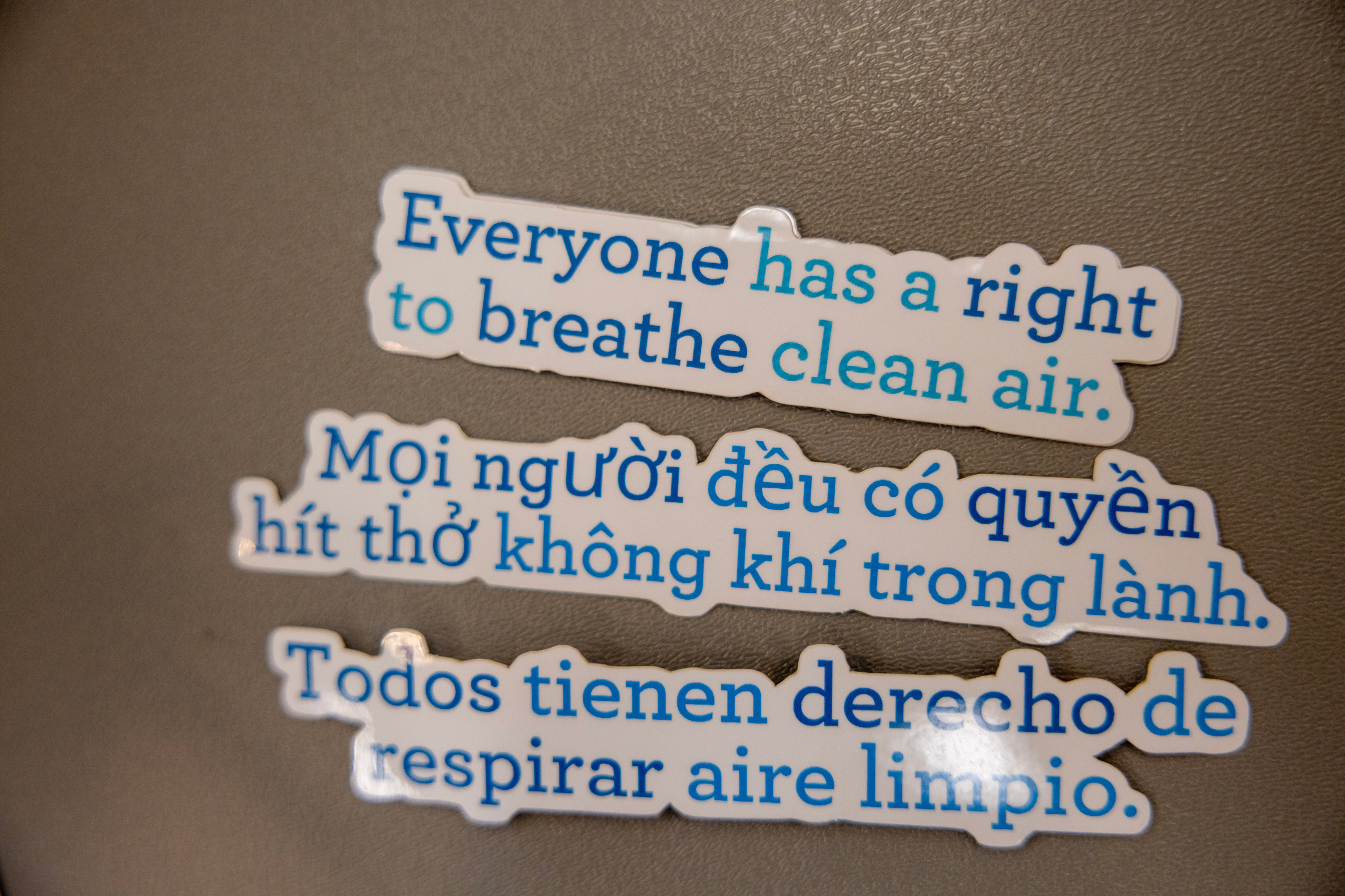|
Getting your Trinity Audio player ready...
|
It did not take long for Mustafa Ali to grow accustomed to the smoke stacks looming in the background of his high school cross country practice. Last fall, as Ali and his teammates ran miles through the woods and fields near the school, the power plant followed them – puffy with haze during the day and lit up at night.
Not that Ali was surprised. In Fort Bend County the natural gas- and coal-powered WA Parish Generating Station often blends into the scenery, poking up behind the tree canopy from miles away, emitting clouds of white smoke all day.
“We’re not really sure how it impacts us,” Ali said. “If we have trouble breathing, maybe it’s just because we’re running long distances. Not the plant. But that’s the thing, we don’t know.”
Ali, along with other residents in Fort Bend County, long have called for cleaner energy and cleaner air, which is why when the Environmental Protection Agency proposed a new rule to reduce industrial haze in national parks across the country, it hit close to home, too.
The action, called the regional haze rule, would limit sulfur dioxide and particulate matter emissions at six power plant stations in Texas, including WA Parish. The proposed rule is a revision of a 2017 EPA measure that replaced the sulfur dioxide, or SO2, controls with an emissions trading program – which allowed some power plants to avoid any new pollution controls.
The EPA predicts the revised rule will decrease sulfur dioxide emissions by 80,000 tons per year in Texas. WA Parish currently releases nearly 34,000 tons of SO2 a year, the second highest in the state, according to the Texas Commission on Environmental Quality.
The public comment period for the new rule ends August 2. Residents can submit their comments about the rule online. The nonprofit environmental organization, Air Alliance Houston, and the community group, Fort Bend County Environmental Organization, hosted a letter-writing event last week where residents could write in favor of the regional haze rule.
Ali attended, along with several other concerned residents.
WA Parish, owned by Houston-based NRG Energy, has four coal-fired units and four gas units. The coal portion is able to generate 2,514 megawatts of power – one megawatt can power about 200 Texas homes – but also produces 15.2 million tons of CO2 pollution every year, according to the U.S. Energy Information Administration.
In a statement, NRG said it is assessing the proposed haze rule and the impact it would have on Parish. The company said it will provide responses to the EPA during the public comment period.
Under the new rule, Parish would have to install sulfur pollution controls called scrubbers to two of the four coal units, said Emma Pabst, Texas field manager for the Sierra Club. The scrubber system removes SO2 emissions from the exhaust produced by coal-fired power plants.
Sulfate particles are the largest contributor to haze at Big Bend National Park, creating about half the haze on the worst days, according to the National Park Service. Researchers also have found it pollutes communities in Fort Bend County, contributing to such health issues as asthma, heart disease and cancer.
“It levels the playing field between people and industry in Texas,” Pabst said. “For so long, coal plants have managed to avoid installing these basic, common-sense pollution controls. This will help change that.”
Not too long ago, Ali joined the Fort Bend County Environmental Organization as a student ambassador because of his concerns over the coal plant. The organization, which began in 2019, focuses on research and improving air quality in the county.
Donna Thomas, president of Fort Bend Environmental, said the regional haze rule is only a step in the right direction. For her, the best and healthiest answer is renewable energy.
Thomas has lived in Fort Bend County since she was about 10, just a few years before WA Parish began operations in 1977. She grew up with asthma and had a stroke a few years ago, both of which she attributes to the pollution. Her mother died of an asthma attack in 2013.
“The purpose for us is to eliminate coal,” Thomas said. “They already have gas there that’s working, so why not go that way? Why keep waiting? We need change now.”
In 2018, a research group led by Rice University atmospheric scientist Daniel Cohan found unscrubbed sulfur from Texas coal plants causes hundreds of deaths a year; it attributed 177 premature deaths a year from particulate matter emitted from the Parish plant.
SO2 and other pollutants from coal plants can harm the respiratory system, make breathing difficult and worsen conditions such as asthma and chronic bronchitis.
Asthma also is a major health issue in Houston. In 2018, the asthma hospitalization rate in Houston was 6.59 per 10,000 adults and children, according to a report by the Houston Health Department. The national rate is 5.5 hospitalizations per 10,000.
In a statement, NRG said it has concerns with the modeling used by the EPA in developing the haze rule, including the fact that the Parish units are 359 miles away from the nearest federal land area.
The Rice study predicted that implementing SO2 controls could prompt most of the plants to close or convert to natural gas, which would “yield substantial benefits for climate, air quality, and health beyond the stated purpose of reducing regional haze.”
Haze pollution can travel hundreds or even thousands of miles and pollute air quality far from the original source, according to the EPA. Most of Texas’ haze problems come from SO2 particulate matter, said Pabst from Sierra Club.
“Air pollution really has no bounds,” Pabst said. “But before it makes its way to the Guadalupe Mountains or Big Bend, it also passes through our communities.”






